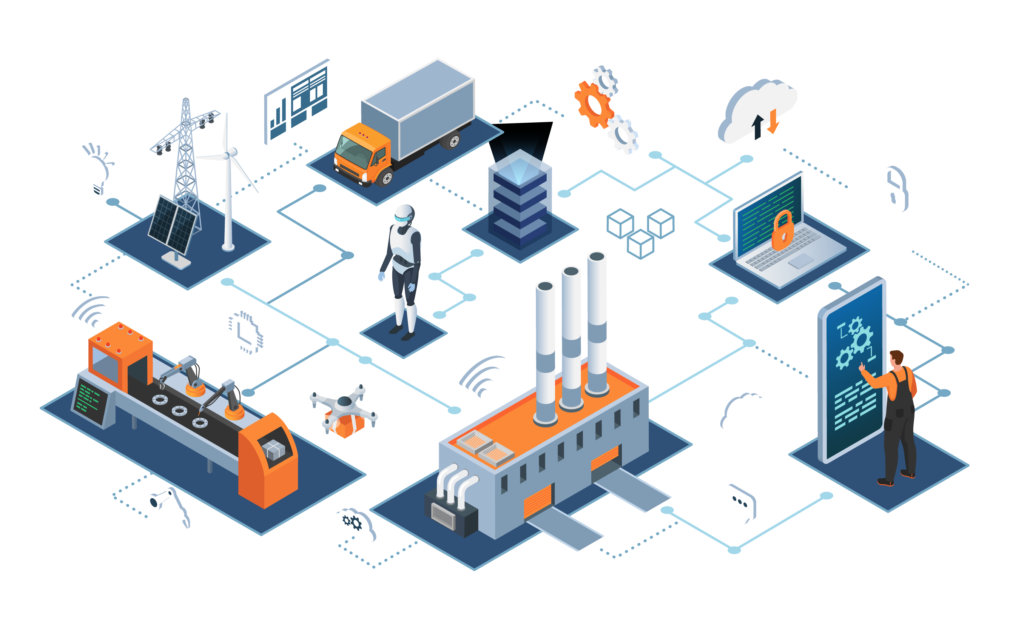In today’s globalized economy, efficient asset tracking is more essential than ever. From shipping containers traversing the oceans to heavy equipment in remote areas, organizations need a reliable way to monitor assets across challenging terrains. With the rise of Satellite IoT, businesses are no longer restricted by infrastructure limitations. Satellite-enabled asset tracking provides seamless, visibility and control, even in the world’s most inaccessible regions.
What is Satellite IoT?
Satellite IoT (Internet of Things) combines satellite communication technology with IoT devices to track, monitor, and manage assets on a global scale. Unlike terrestrial IoT networks, which rely on cellular or Wi-Fi connections, Satellite IoT connects directly to satellites in orbit, enabling coverage in remote or geographically dispersed areas where traditional networks are unavailable or unreliable. This allows businesses to monitor a diverse range of assets across the globe without gaps in connectivity.

The Advantages of Asset Tracking with Satellite IoT
Global Coverage
Satellite IoT offers true global coverage, enabling organizations to track assets in oceans, mountains, deserts, and other hard-to-reach locations. This is particularly beneficial for industries like maritime shipping, oil and gas, agriculture, and logistics, where assets frequently move across areas with limited connectivity.
Data and Insights
Data from satellite IoT allows organizations to monitor the status of their assets 24/7, providing valuable insights into asset location, condition, and operational status. This empowers businesses to respond promptly to potential issues, preventing costly disruptions and enhancing operational efficiency.
Improved Security
With satellite-based asset tracking, companies can monitor their assets’ movements and set up alerts for unauthorized location changes, tampering, or potential theft. By having a constant view of assets, businesses can improve the security of high-value items in transit and reduce risks associated with asset loss or damage.
Reduced Operational
Costs
Satellite IoT provides valuable data that can lead to improved asset utilization and reduced downtime. Knowing where each asset is at any given time helps avoid unnecessary replacements, optimize maintenance schedules, and enhance logistical planning, resulting in significant cost savings over time.
Sustainability and Environmental Impact
Satellite-enabled tracking provides insights into fuel consumption, route optimization, and asset utilization, helping industries like shipping, agriculture, and mining minimize emissions and waste. Data supports sustainability reporting and compliance, to meet environmental standards and certifications.
Enhanced Compliance and Reporting
Satellite IoT provides valuable data that can lead to improved asset utilization and reduced downtime. Knowing where each asset is at any given time helps avoid unnecessary replacements, optimize maintenance schedules, and enhance logistical planning, resulting in significant cost savings over time.
Key Industries Leveraging Satellite IoT for Asset Tracking
Maritime and Shipping
The maritime industry has historically faced challenges in tracking ships and cargo over vast ocean distances. Satellite IoT provides location data for ships, containers, and cargo, allowing for precise tracking and planning.
Agriculture
Satellite IoT enables farmers to monitor heavy machinery, livestock, and crop health in real time across expansive agricultural areas. This results in optimized asset use, better crop yields, and more efficient farm management.
Oil, Gas, and Mining
In remote areas where terrestrial networks can’t reach, Satellite IoT allows companies to track high-value equipment, monitor environmental conditions, and ensure safety compliance. This improves productivity while minimizing the risks of equipment downtime.
Logistics and Supply Chain
Satellite IoT enhances the ability of logistics companies to track and manage their fleets and assets in transit, regardless of location. The visibility provided by satellite tracking helps reduce delivery times, optimize routing, and ensure asset integrity.
How Does Satellite IoT Work in Asset Tracking?
- Device Installation
Small IoT sensors are installed on assets to monitor location, temperature, vibration, and other environmental factors. These devices connect with satellite constellations in Low Earth Orbit (LEO) or Geostationary Earth Orbit (GEO), transmitting data in real time. - Data Transmission
The IoT sensors relay data directly to satellites, which send the information back to ground stations. From here, the data is processed and made accessible to companies via network management platforms and centralized dashboards or mobile applications. - Data Analysis and Alerts
Once data is received, AI-powered analytics can detect anomalies, predict maintenance needs, or send automated alerts in case of abnormal behavior. This predictive insight minimizes downtime and extends the lifecycle of valuable assets.
Challenges in Satellite IoT for Asset Tracking
Satellite IoT solutions can be expensive to implement and maintain, especially for small businesses. However, the long-term cost savings through increased asset efficiency and reduced operational downtime often justify the initial investment. With more assets connected, data security also becomes a critical concern. Robust encryption and cybersecurity measures are essential to protect sensitive information and prevent unauthorized access to asset data. In addition, IoT sensors and devices must be energy-efficient to last in remote environments. Many devices are designed with low-power modules or solar power options to ensure long-lasting operation, but energy constraints still pose challenges.
Future Trends in Satellite IoT for Asset Tracking
- Advancements in Battery and Power Management
Future IoT devices will feature more efficient battery technology, solar charging capabilities, and power-saving modes, enabling assets to be tracked for longer periods without intervention. - Improved Satellite Coverage and Connectivity
As satellite technology advances and the number of active satellites increases, connectivity gaps will continue to close, making it easier and more cost-effective for businesses to monitor assets globally. - Enhanced AI and Data Analytics
AI and machine learning will play a larger role in analyzing the data collected by IoT devices, leading to more predictive insights, automated maintenance scheduling, and risk mitigation.
Conclusion
Satellite IoT has revolutionized asset tracking, breaking down geographical barriers and enabling monitoring across remote areas. For industries dealing with high-value assets in hard-to-reach places, the benefits of enhanced visibility, security, and efficiency far outweigh the challenges delivering return on investment models that will drive the uptake of asset tracking globally. As technology evolves, Satellite IoT is poised to become an essential component in the digital transformation of asset management, helping organizations maximize asset value, minimize costs, and achieve new levels of operational efficiency and sustainability.